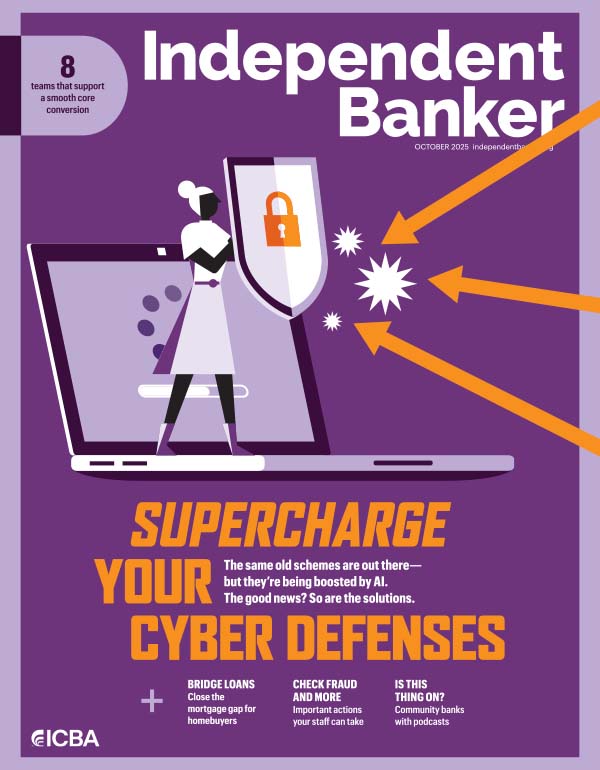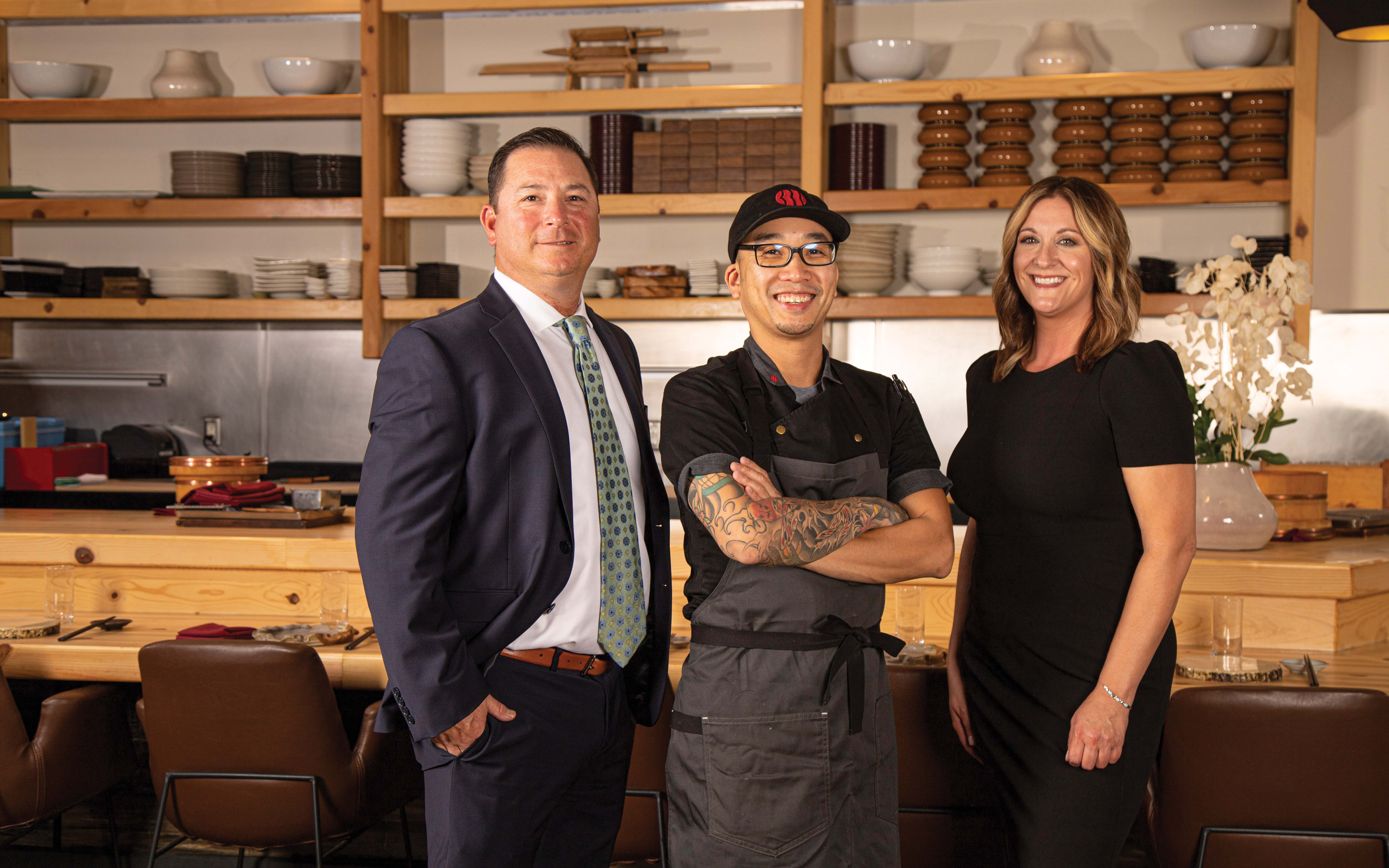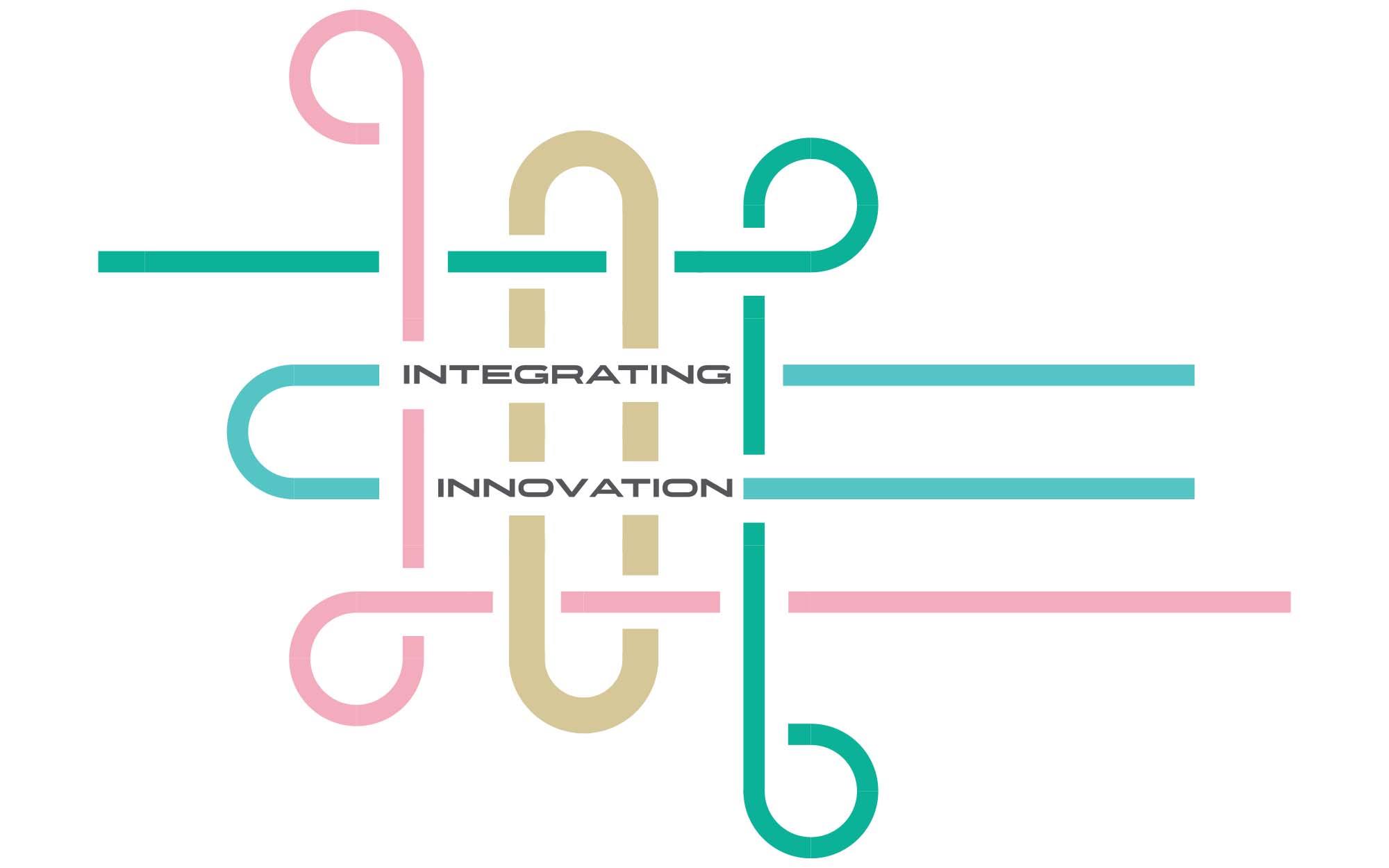Technology vs. hands-on processing
Technology helped many community banks successfully implement the Paycheck Protection Program (PPP), but some ICBA members had more success than their competitors, due to their hands-on approach to lending.
For example, Josh Hogue, president of Reliabank in Estelline, S.D., says customers appreciated old‑fashioned manual loan processing during the crisis. His bank made 398 PPP loans in the first round and 678 in the second.
“Doing it manually really helped us out a lot,” he recalls. “Sitting down with customers and talking to them about what they needed and helping them gather the forms was important. We didn’t do the online portal—our customers really needed that face‑to‑face consultation, not an online portal.”
Maureen Frank, president and CEO of New Haven Bank in New Haven, Conn., also appreciated the value of limiting technological operations during COVID.
“We did it manually,” she says, adding that the bank had just 20 staff members at that time, with only six of them working full time on processing PPP loans. “I think that some of the banks that tried to automate the whole process right out of the gate, it didn’t work out for them.”
When Maureen Frank looks around her community of New Haven, Conn., she sees numerous businesses and organizations that might have closed during COVID-19 were it not for the efforts of New Haven Bank. The $185 million‑asset community bank issued about 350 Paycheck Protection Program (PPP) loans, about half of which went to noncustomers.
“There’s a soup kitchen in New Haven that provides meals for homeless people on a daily basis,” says Frank, president and CEO of New Haven Bank. “They were not our customer. We helped them and they were able to stay open. There was a Boys and Girls Club that was an independent club that didn’t get any federal funding. We helped them to stay open. There were preschools, daycares and multiple churches. We helped a lot of places in New Haven that probably wouldn’t have survived if we didn’t work with them.”
Many community bank leaders can say the same thing. Their above‑and‑beyond efforts to issue PPP loans helped countless businesses and other organizations make it through an extremely challenging time in history.
But those efforts did more than save small businesses across America. They also helped accelerate technological advances at some community banks, pumped up many banks’ bottom lines and, in some cases, profoundly affected the culture of the banks themselves.
One of the most significant lasting changes that the PPP era wrought on Oak Valley Community Bank in Oakdale, Calif., was the acceleration of technology. Chris Courtney, CEO of the $1.8 billion-asset community bank, says that when COVID hit, the bank had been using spreadsheets to manage lending and on-premises business operations software.
“Our chief information officer [and executive vice president], Russell Stahl, had launched Microsoft 365 six months in advance [of the pandemic] and told us, ‘Hey, this is the wave of the future, everyone’s going to be using it, let’s begin adopting it now,’” says Courtney. “But of course, we’re like, yeah, we don’t really know if we need this.”
But when COVID hit and the PPP launched, Stahl’s premonition came true. Microsoft 365 went from a boring IT idea to an essential tool that everyone had to learn. The system’s communication capabilities, including instant messaging, video conferencing and shared spreadsheets, proved invaluable when staff were abruptly unable to meet in person because of the virus.
“We would never have been able to pull it off had it not been such a technological advantage at that point,” Courtney says. “I know other banks utilized it too, but we took it to another level and the education process was just phenomenal.”
Microsoft 365 was not the only advanced technology Oak Valley Community Bank adopted during COVID. In the beginning stages of the first round of PPP, the bank continued using spreadsheets to manage loans, but towards the end of that round, the lending team adopted the Abrigo commercial loan origination automation system. This allowed them to handle a greater volume of loan applications in a shorter period.
“Between that technology and Microsoft 365, it really lit things up,” Courtney says. “We really had it humming.”
With the help of that technology, the community bank eventually issued 2,500 PPP loans worth $345 million. And, of course, the technology continues to help them thrive. “It’s part of our being,” Courtney says. “It is so ingrained.”

Converting new customers
Another major change brought about by PPP was an influx of new customers for many community banks. The value of working with a lender that could offer a personal connection—a hallmark of community banking—quickly became evident when PPP launched, and many businesses discovered that their existing megabanks could not help them quickly enough, or at all.
In the years since, the fundamental benefits of working with a community bank have kept many of these new customers in the fold.
Josh Hogue, president of $798 million-asset Reliabank in Estelline, S.D., says his community bank gained about 20 new business customers because of its PPP efforts. These new clients previously worked with competing banks, usually larger, that were slow to get their PPP efforts going or that had difficulty helping clients through the forgiveness phase after the first round.
“[These clients] recognized the value of the face-to-face service that we bang the drum about all the time,” Hogue says. “The biggest benefit to us was that some of them brought nice size deposits to us, and we’ve kept them. And some of them have now come to us for lending, such as for new equipment.”
“I think that the whole commercial team … still to this day looks back on April 2020 and takes an immense amount of pride in a very heavy lift on the part of this organization in a very short amount of time.”—Chris Caldwell, Community National Bank
Craving a human connection
Chris Caldwell, president of $1 billion-asset Community National Bank in Derby, Vt., says noncustomers came knocking soon after the bank implemented its PPP lending.
“We had a lot of CPAs that we worked with that would tell their clients, ‘Just call Community National Bank, they’ll get you taken care of,’” says Caldwell, who joined the community bank during the second round of PPP. “Typically, they were working with much larger banks that had some sort of technology platform where the customer was supposed to go in and make an application and hit submit, and then it would disappear into the ether. And they weren’t quite sure what the status of their loan was and couldn’t reach any human being.”
Community National Bank made 880 PPP loans in the first round and 986 in the second round. One of the new customers the bank secured was a property development firm.
“Their accountant referred them over to us, and they have blossomed into a really nice deep relationship with us,” Caldwell says. “And the lender that’s assigned to that client has done a wonderful job of helping them grow their company after the pandemic.”
Jed Fanning, president and CEO of Citizens Bank of Las Cruces in Las Cruces, N.M., reports that his bank, a $1 billion-asset institution, issued 1,500 PPP loans that averaged about $65,000 each.
“We established some new relationships that have now become loyal customers because of how we took care of them at such a critical time,” Fanning says. “After they made it through that period, some of them moved loans from their former bank to our bank, and we were able to help them by refinancing existing debt. And some of them in the last couple of years have grown and have had additional needs such as equipment or owner-occupied real estate.”
Meanwhile, Oak Valley Community Bank now has tracked at least 236 new customers who were given PPP loans and have remained customers, says Courtney.
Among them are a construction company that moved a $2 million deposit relationship to the bank and a wood treatment company that left Wells Fargo to join Oak Valley and brought along $1 million in deposits.
“You don’t get customers like that without a hard fight, but here they were at our door because they heard that somebody else got a PPP loan from us,” Courtney says.
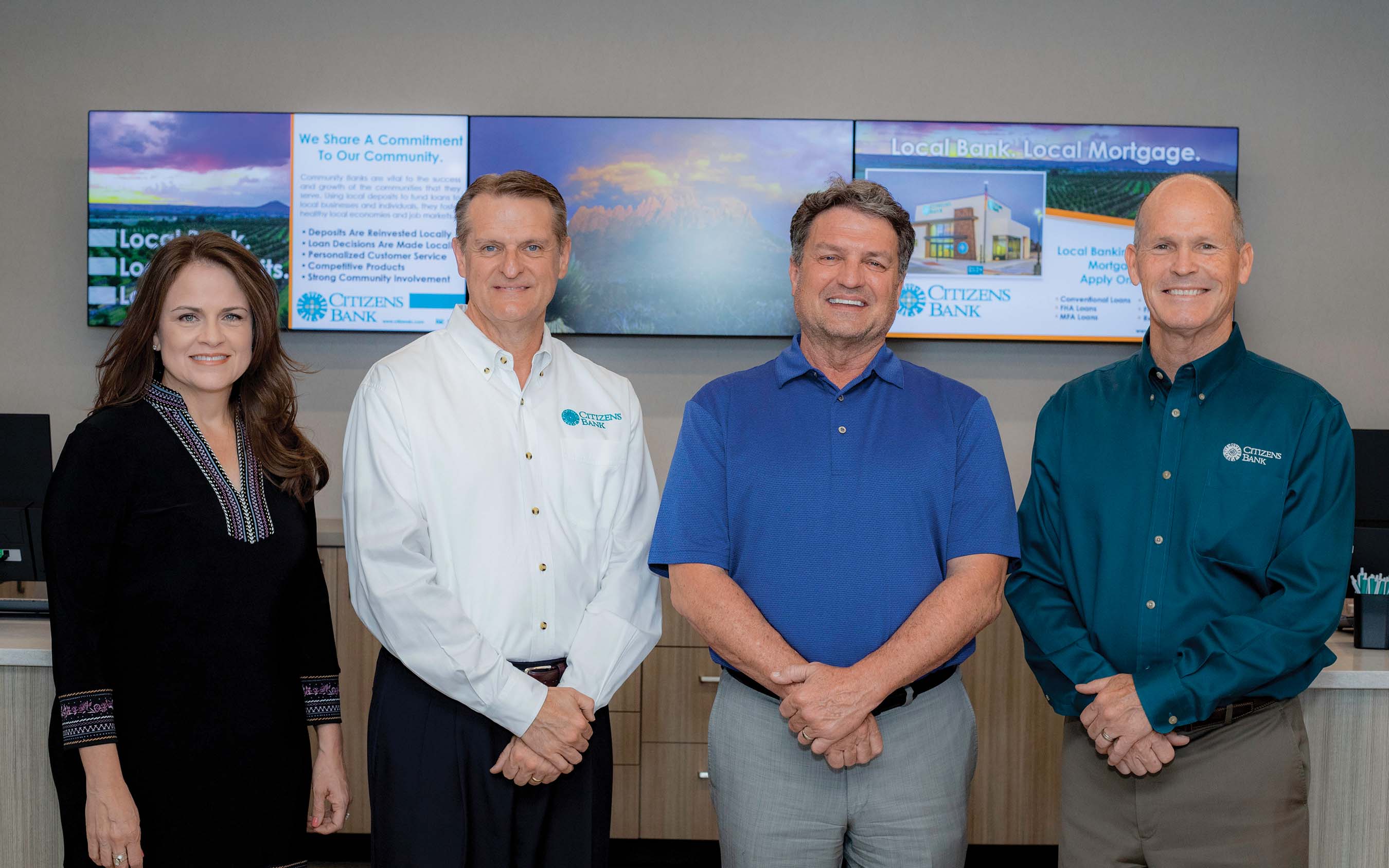
A shift in culture
Bringing in new customers was a profitable result of the PPP. But for many ICBA members, another significant long-term effect of the program was a culture change.
Courtney remembers discussing transformative experiences during an employee event just months prior to COVID. He lamented to his staff that some of the employees had not been there for these experiences, such as the prior economic recession.
“There is the cultural bond that we all have because of these special events,” he says. “Well, a month and a half later, we had the mother of these events. Everybody at that point was talking about that pull, the camaraderie, the belief that we had to save not only the bank; we had to save our community. There is a buzz and a cultural leftover, if you will, that was so powerful and potent. And now the attitude that we can do anything if we have to prevails in our culture, because we did it.”
Caldwell says he has seen a similar cultural change at Community National Bank.
“I think that the whole commercial team—the loan processors, the loan servicing folks, the credit team, the commercial lending team—I think everybody to this day looks back on April 2020 and takes an immense amount of pride in a very heavy lift on the part of this organization in a very short amount of time,” he says. “And that attitude still permeates, to some degree, and there’s still that level of real appreciation for each other and what we did then.”
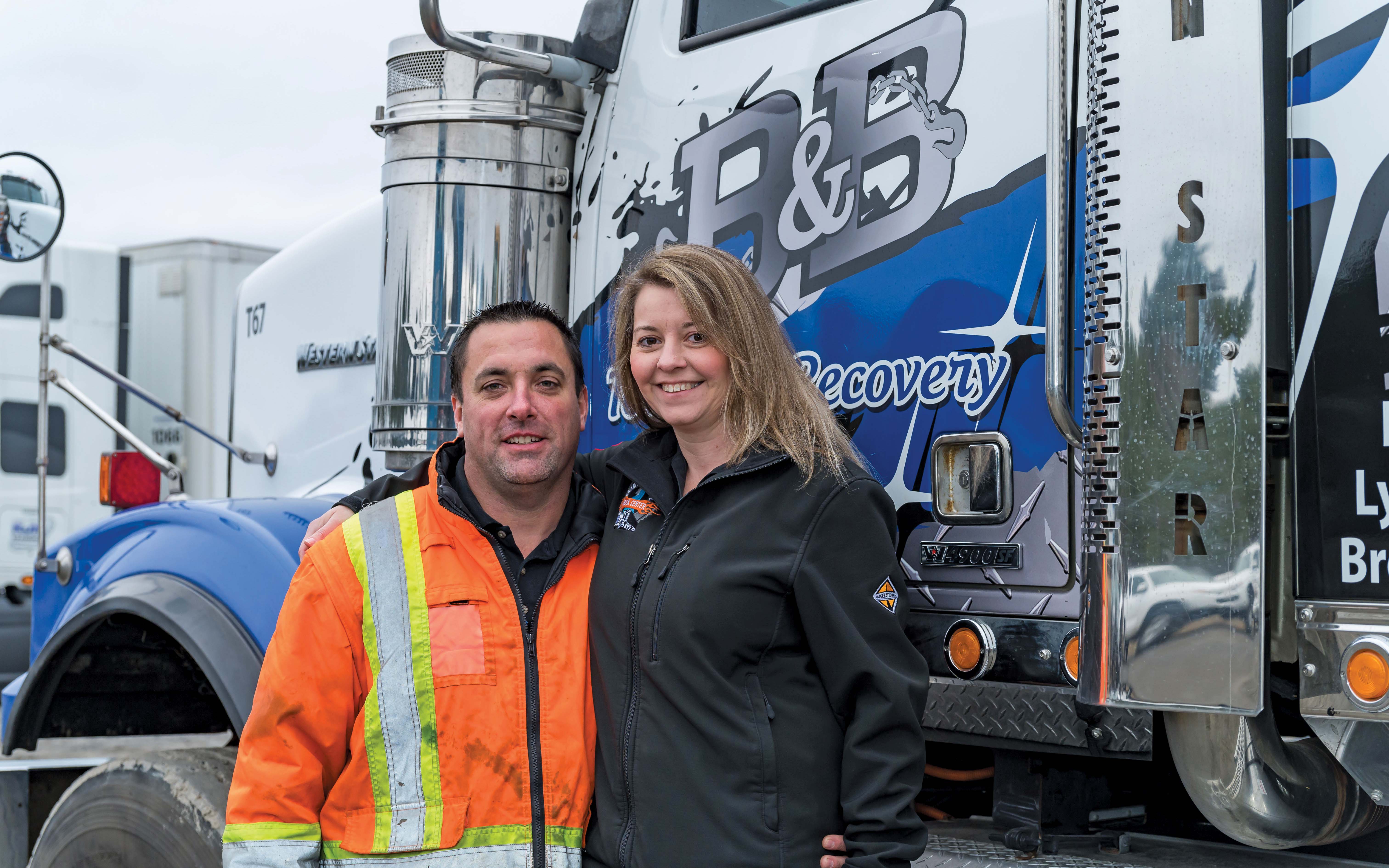
Small-business rescue mission
Perhaps the most profound lasting effect of the Herculean effort community banks put into the PPP lending is seen outside the banks’ walls. Were it not for that work, many businesses that now thrive in their communities simply would not exist.
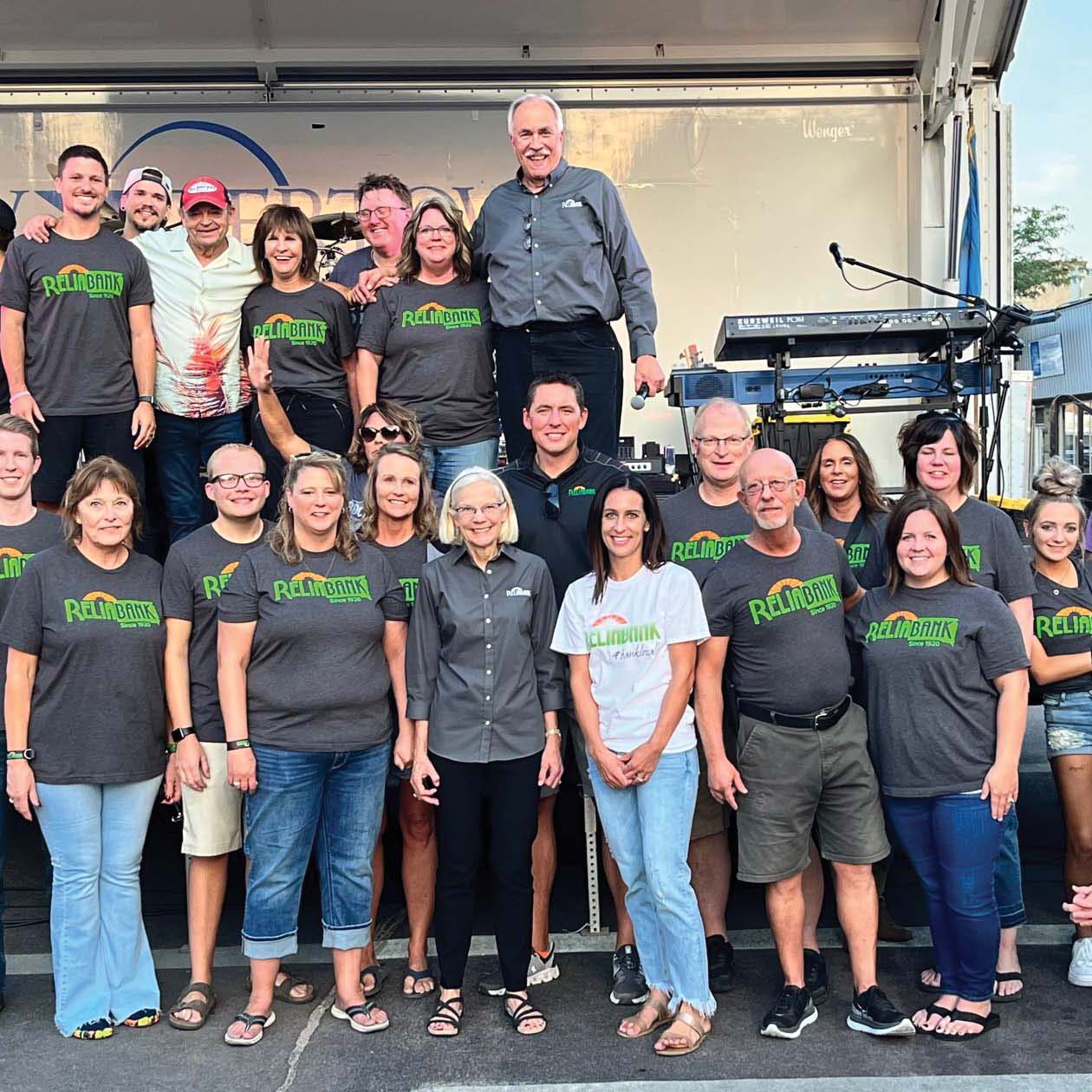
And it’s fair to say that community banks deserve more credit for saving the business community during COVID than their bigger competitors. Data analyzed by ICBA showed that community banks originated more than $210 billion in PPP loans in the first three weeks of the program, which saved an estimated 20 million jobs. During those same weeks, large banks, credit unions, Farm Credit System institutions and other lenders paid out less than half that amount.
Despite the trials and tribulations of the pandemic, countless businesses are thriving today thanks to community banks’ efforts. For example, a South Dakota-based manufacturing company moved its accounts to Reliabank during COVID when its existing bank did not handle its PPP loan application adequately. Reliabank did the job right and secured a large loan for the manufacturer. Before long, the company increased production and added space.
“If they had laid off staff during COVID, they probably never would have got to the stage of where they could add on,” Hogue speculates.
The efforts of community banks to help their communities did not go unnoticed. Courtney of Oak Valley Community Bank recalls attending a dinner of local business executives in 2022, during which each spoke briefly of their COVID experiences. When Courtney’s turn came, he explained how his staff worked 24/7 processing the PPP loans. After he finished, the 40 other executives at the event stood up and applauded him.
“I knew that we were helping some of these folks, but I had no idea the depth of that and how important it was for them,” he says. “There were some extremely scared people. They knew if they didn’t get their money and pay their employees, they were done. If it wasn’t for this program, the percentage of people who wouldn’t have made it would’ve been catastrophic.”
Community banks’ benefits, from technological leaps and enhanced culture to new customer relationships, are just the icing on the cake.
A safe haven for lower-income communities
One goal of the Paycheck Protection Program was helping the individuals who were most at risk during COVID: those on the lower rungs of the economic ladder. Data analyzed by ICBA show that community banks did a superior job of supporting those individuals: Community banks accounted for 67% of PPP loans to industries with average hourly earnings of $10 to $20.
“When you consider that the PPP program was designed to help those in precarious positions remain employed, you see that community banks did a better job of that,” says Mickey Marshall, AVP and regulatory counsel for ICBA.
Jed Fanning, president and CEO of Citizens Bank of Las Cruces, N.M., says his bank helped a great number of at-risk individuals. “Most of the businesses and the communities we serve have more employees in that $12 to $20 per hour range,” he says. “So, I can say that we probably impacted more employees [of clients] in that lower income bracket.”

